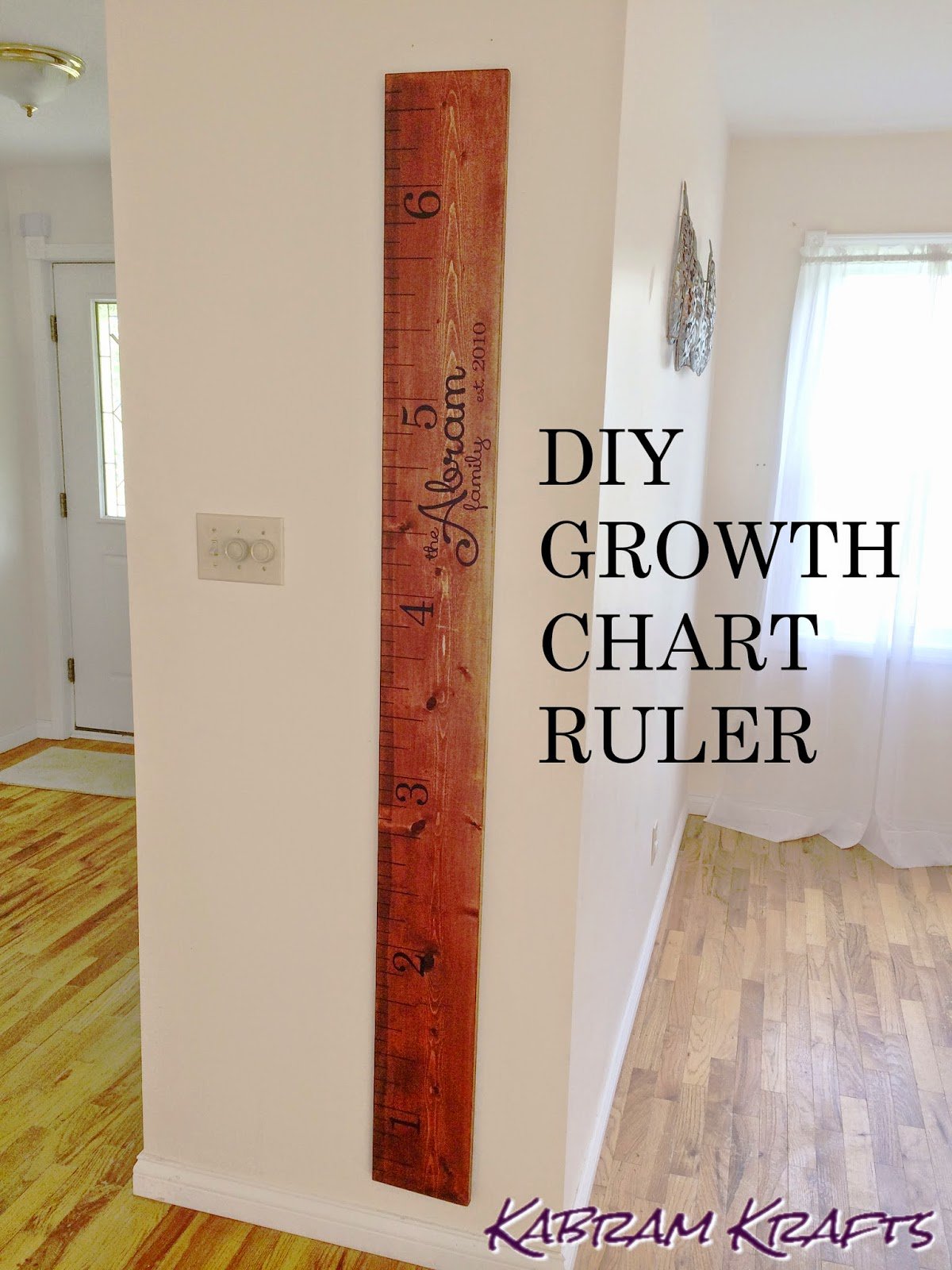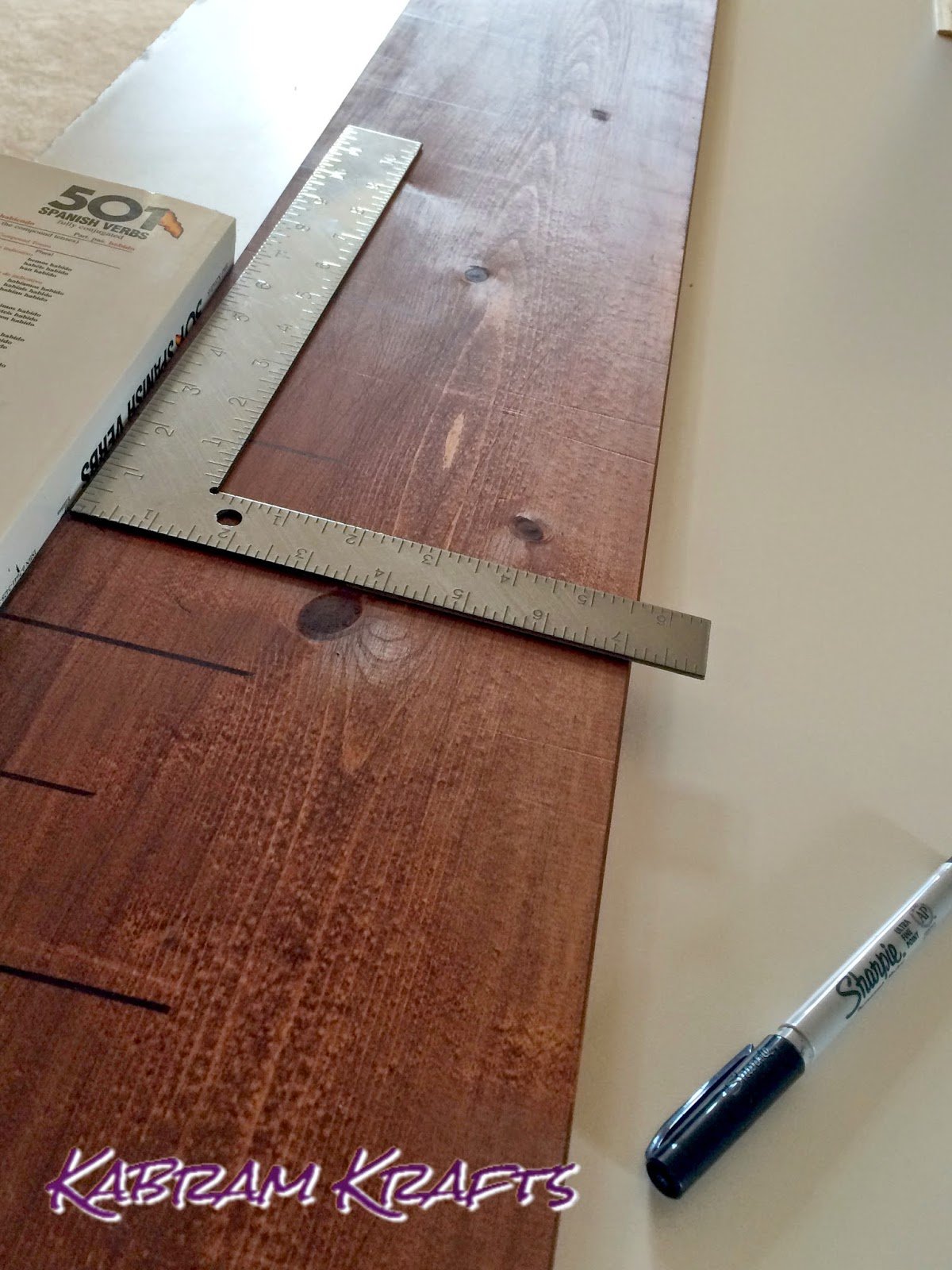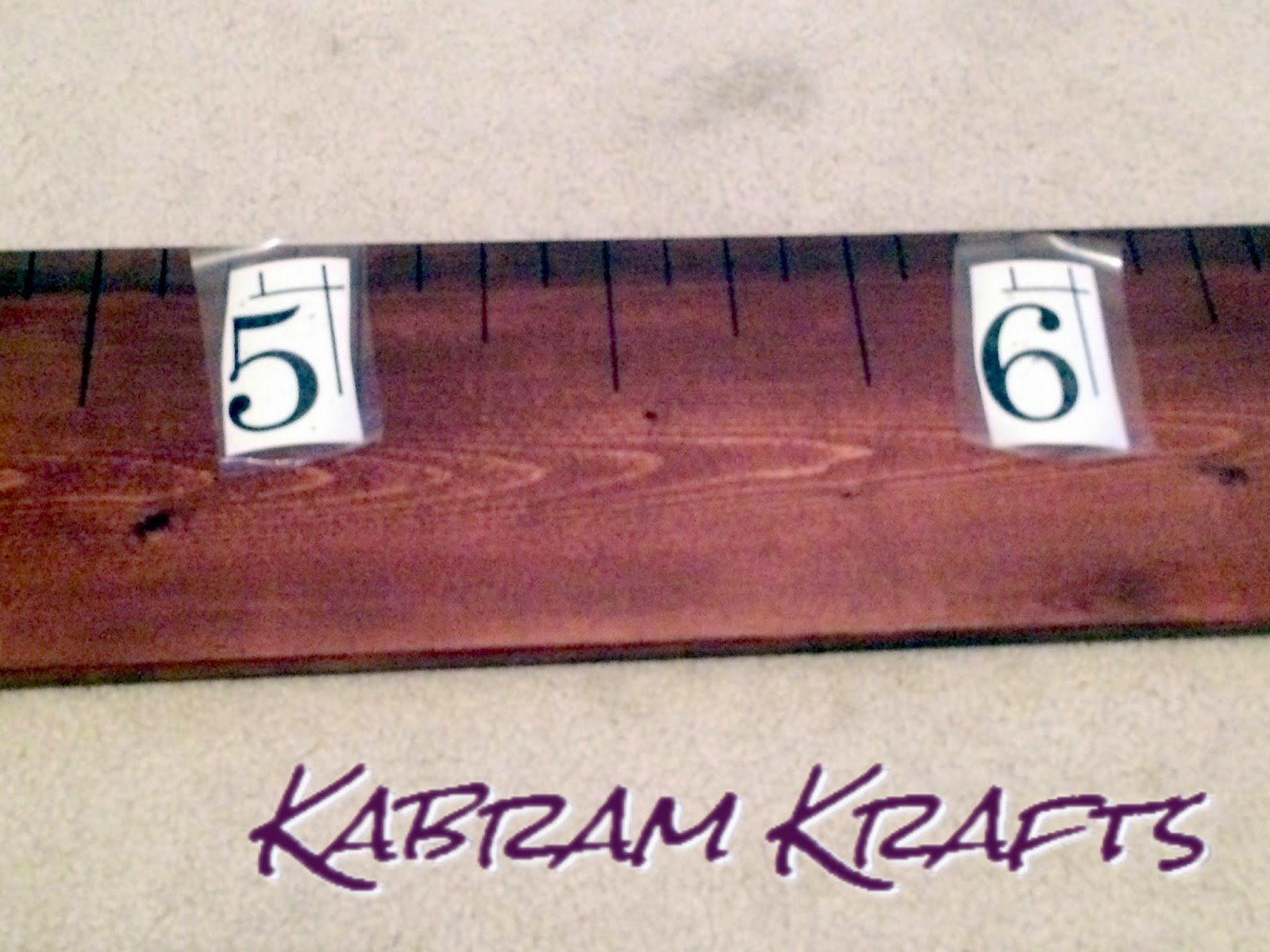
Well, this is one of those projects that I’m sure you have seen if you have spent any time on Pinterest. Despite its ubiquity, I wanted to give it a try since it has a wonderful appeal both in its practicality and in its decorative nature.
Once completed, you can chart your children’s growth without the worry of having to leave behind a chart on the wall. The ruler is also a beautiful keepsake for years to come!
I wanted to keep the cost of this project down, so I rummaged around the stash of paints and such that was left in our home by the previous owner. I found a can of stain – just what I was after. Now, this meant that I had to be content with the stain color I had (red oak), but it definitely kept the costs down.
Materials
- 1″ x 8″ x 6′ board (I had them cut an 8′ pine board down to 6′, cost = $8)
- Stain – whatever color you like, it really doesn’t take too much either
- Sandpaper
- Black Permanent Marker
- Ruler / Square (Square is optional, but VERY helpful)
- Silhouette Cameo (optional – can use printer and exacto to make a template instead)
- Black Vinyl (optional, see above)
- Clear Spray Coat (optional)
- Sand and Stain your wood.Tips: Sand a lot; I definitely should have sanded this some more, but oh well… Also, you can wipe your stain off after several minutes with a paper towel to get a lighter look (didn’t know this at first!)
- Mark your lines every inch with your permanent marker and measuring device.Length of the lines I drew:
– Each “foot” mark = 3.5″ long
– Each 4″ between feet = 3″ long (these divide each foot in thirds)
– Each 2″ withing the thirds = 2″ long (these divide each third in half)
– Each remaing 1″ mark = 1″ longTips: Use a square if you have one! This allows you to make even, perpendicular lines. I began my board at 6″, so my 1 foot mark was 6″ up the board. Measure the baseboards where you plan to hang your finished product to ensure you start high enough. Also, if you have room, there is no shame in making a taller ruler – I probably could have had an extra foot on mine if I had thought ahead. - Spray your wood with several light coats of your clear protective coat.Tips: I don’t know how essential this is. It seemed to smooth the surface, make me feel better about the projects durability, and perhaps prep it for the vinyl. Note that I did not spray the project after the vinyl was applied as this can make the vinyl peel up.
- Design and cut out your vinyl (or paper stencil). Feel free to use the numbers I made – here is my svg file.
Tips: I used Century font and put a little bracket around each number to help me line it up. If you use my cut file, leave the bracket on while applying to get it straight, then pull it off your project. Play around with your name if you want it, I used Xiomara font with Century for the numbers.
- Apply your vinyl lettering and admire your work! (And, I suppose, hang it on the wall…)




Usually I don’t learn post on blogs, but I would
like to say that this write-up very forced me to check out and do so!
Your writing style has been amazed me. Thank you, quite great post.
Did you worry about the vinyl peeling off in the future?